New Peel and Stick Subway Tile Backsplash
The links in this post may be affiliate links. That means that if you click them and make a purchase, this site makes a commission. It will have no impact on the price you pay or the experience of your purchase.
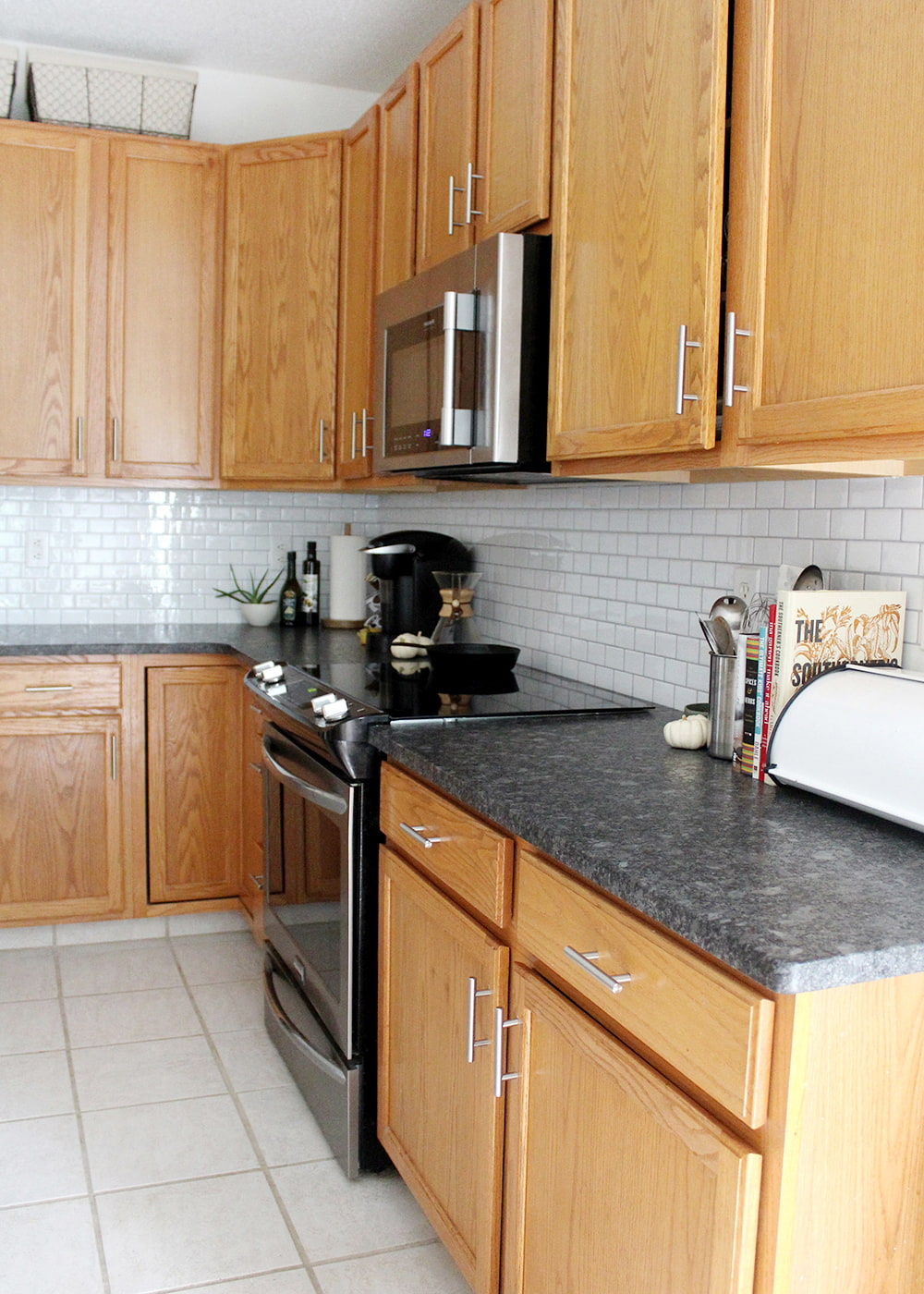
This article contains information and pictures to assist you in determining whether a peel and stick subway tile backsplash is suitable for your kitchen. Additionally, you’ll find six installation tips and answers to four frequently asked questions about peel-and-stick tiles below.
I spent a lot of time deciding on our new backsplash because of our small budget and researched several interesting backsplash ideas. In the end, we installed a peel and stick subway tile backsplash that looks like a classic white subway tile backsplash. Our peel-and-stick tile backsplash cost just over $100.
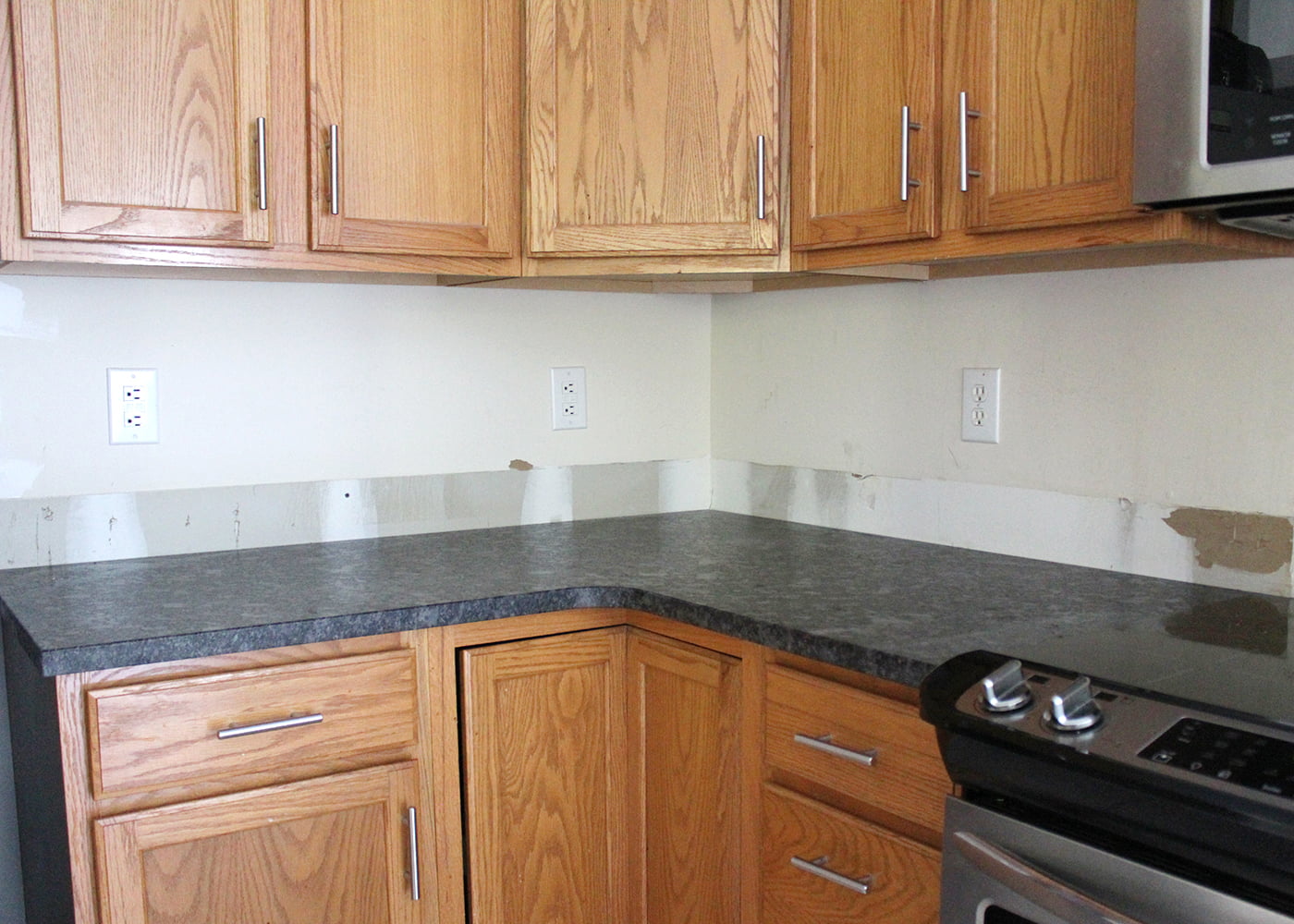
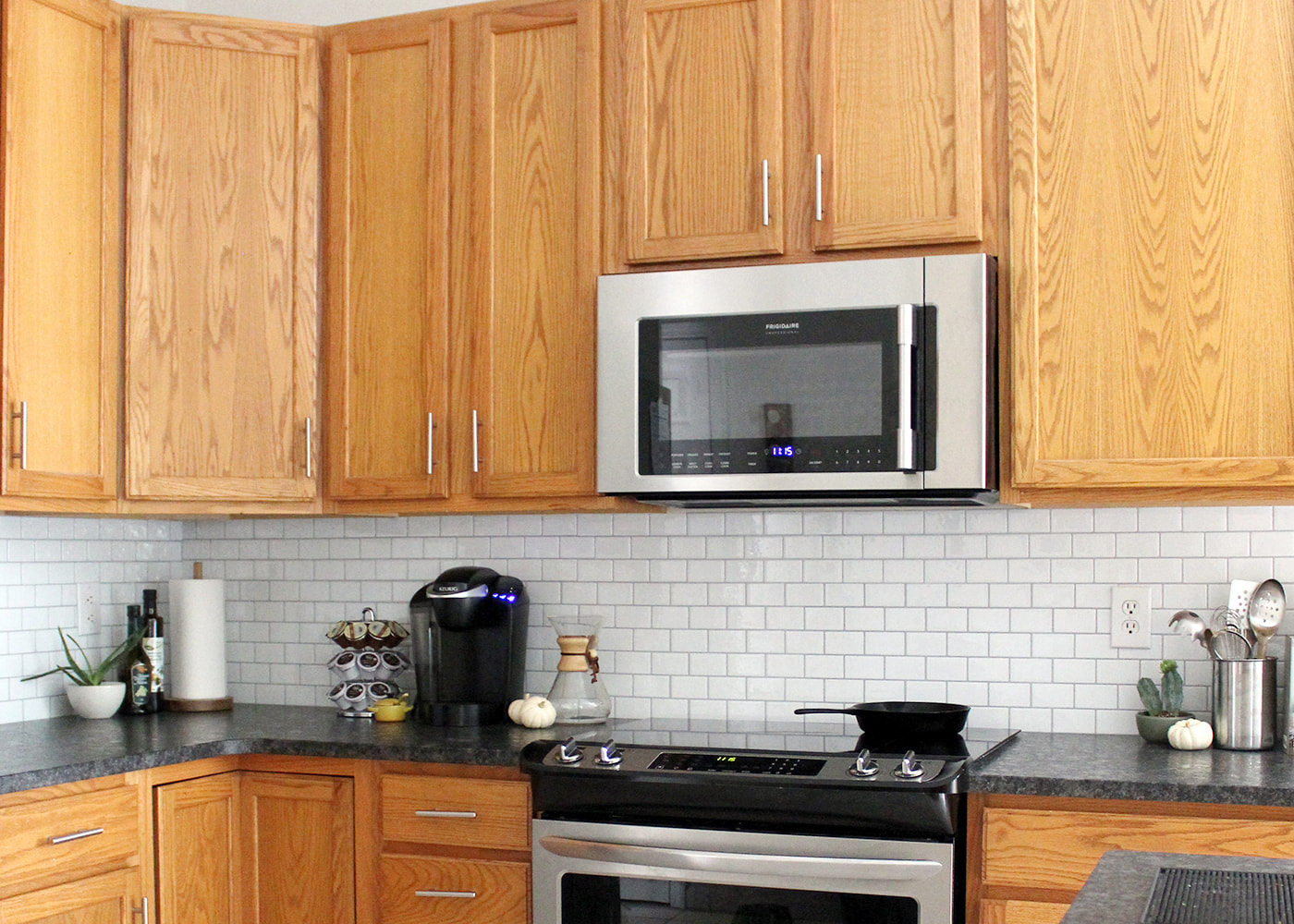
This article contains affiliate links, please read my full disclosure here.
Peel and Stick Subway Tile Backsplash Cost Breakdown
- Peel & Stick Tiles, purchased 30 tile sheets (three packs of 10 12×12” sheets) for $107.91
- Plastic Lattice Molding, $3.85
- Level and a basic pencil (already owned)
- Utility knife and scissors (already owned)
- Paintbrush, painter tape, and spackling paste (already owned)
Total $111.76
*Each kitchen is unique, please measure your backsplash area and order material accordingly.
I used an online backsplash calculator to figure out how many 12”x12” tile sheets we needed. If you buy a different brand of peel & stick subway tile—our tips may not 100% apply. Follow the directions you receive with the product from the manufacturer.
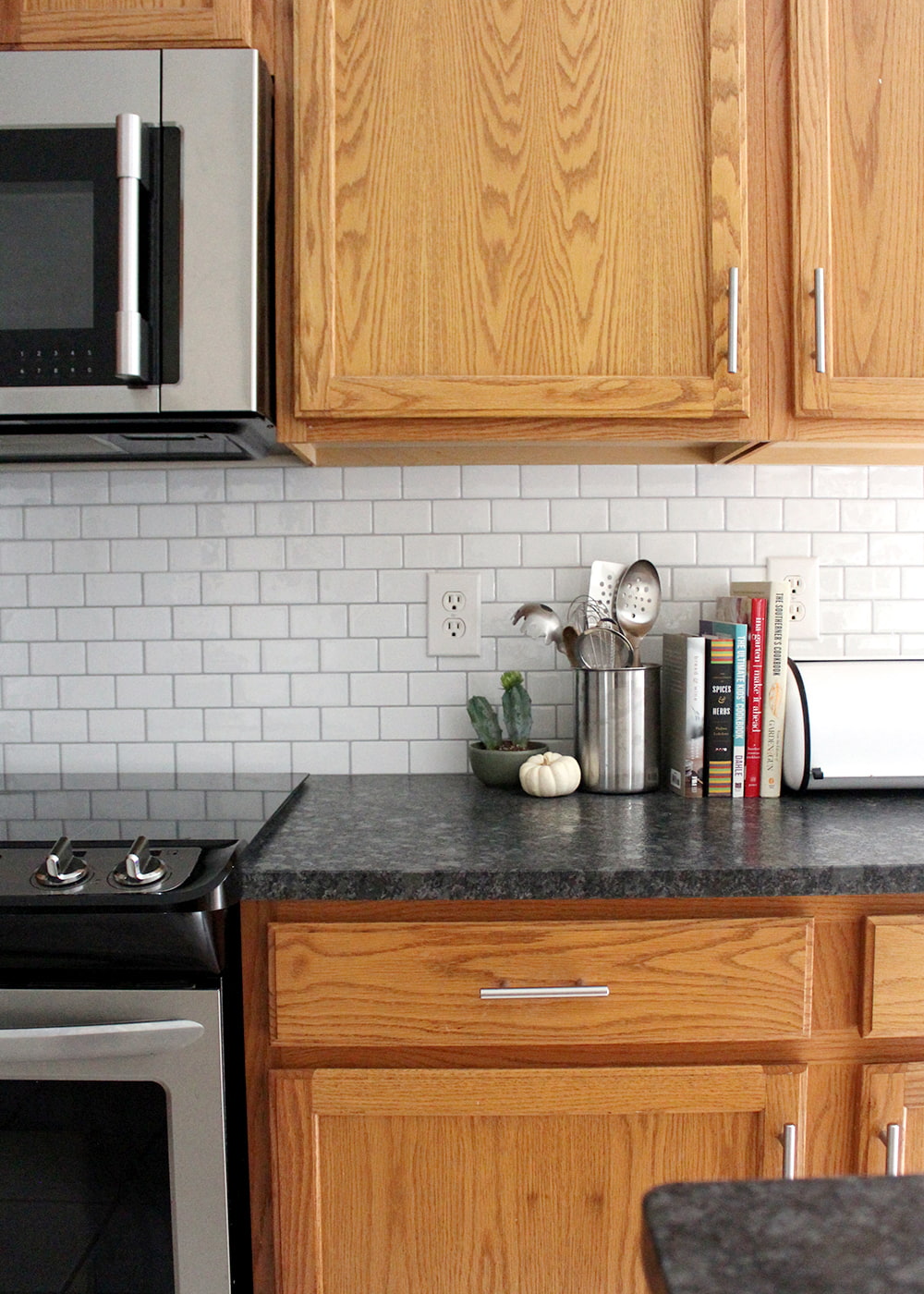
Peel and Stick Subway Tile Backsplash Tips
Tip 1:
You don’t need construction experience to install a peel and stick backsplash, but you do need a perfectionistic eye for detail. A few times we laid the tile along the wall and the faux-grout line looked too thick.
Thankfully the tile sheet can be removed and adjusted for the first 24 hours. If you do need to make adjustments, do it right away so it doesn’t mess up the overall tile pattern.
Tip 2:
Before installing the faux subway backsplash, use a level with a pencil to develop guidelines for sticking your faux tile against the wall.
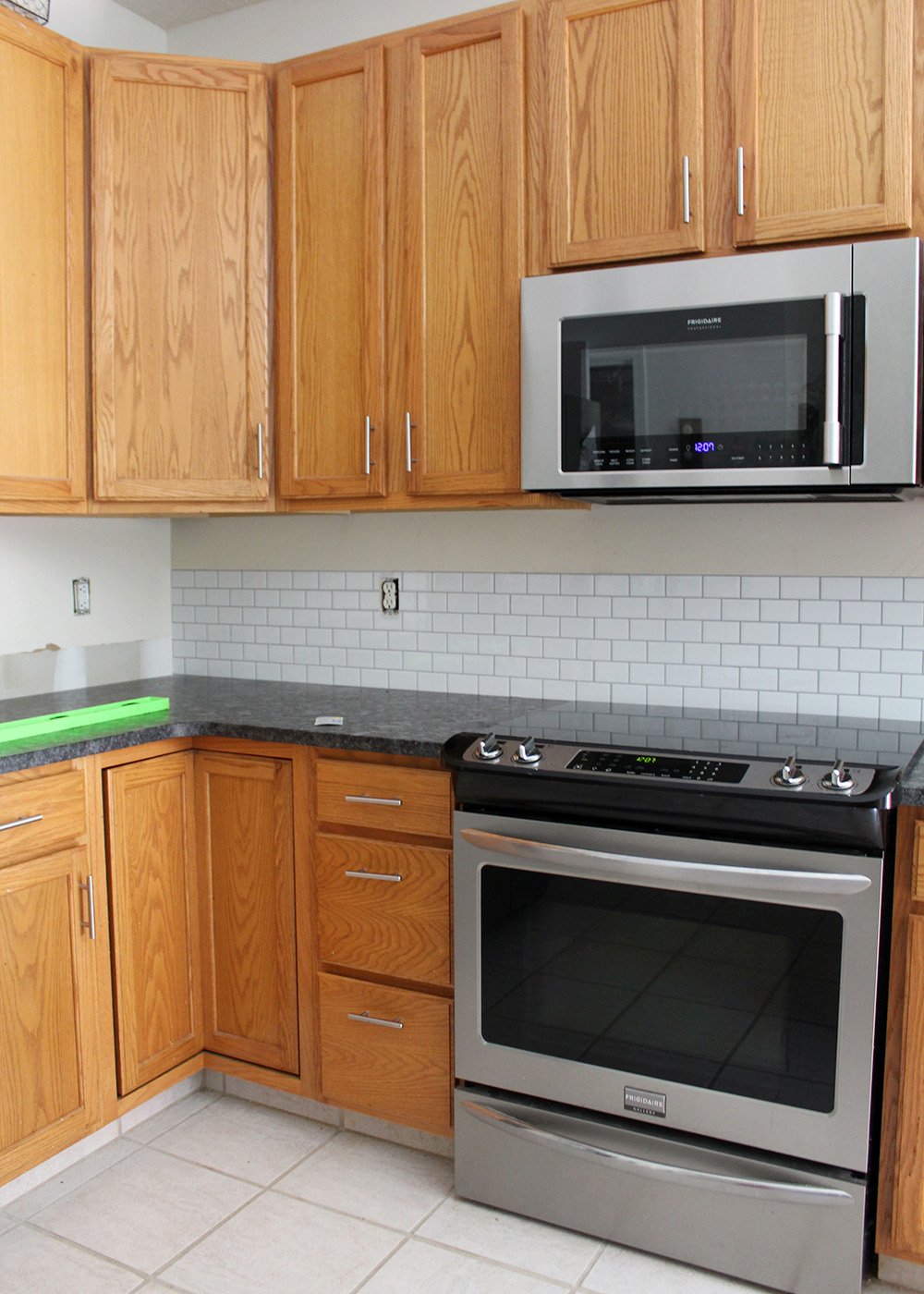
Tip 3:
Cut out a cardboard template for outlets (if your outlets are the same size, this can be reused). Then pencil in dots of the general size/placement on tile paper. Finally, draw the full rectangle on tile paper and carefully cut out the hole with a utility knife.
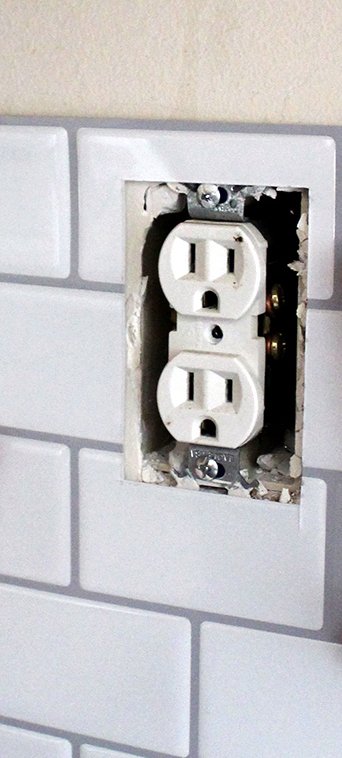
Tip 4:
When smoothing on the peel & stick tile sheets, press across the middle first. Then slowly work your way down and up until you have pressed out all air bubbles and the tile sheet is secure to the wall.
Tip 5:
Make the most of your tile sheets. We had 18 inches in height to cover from countertop to cabinet, and were able to do a full row of 12”x12” sheets, then cut and use 1/2 of the tile sheets for the upper 6”.
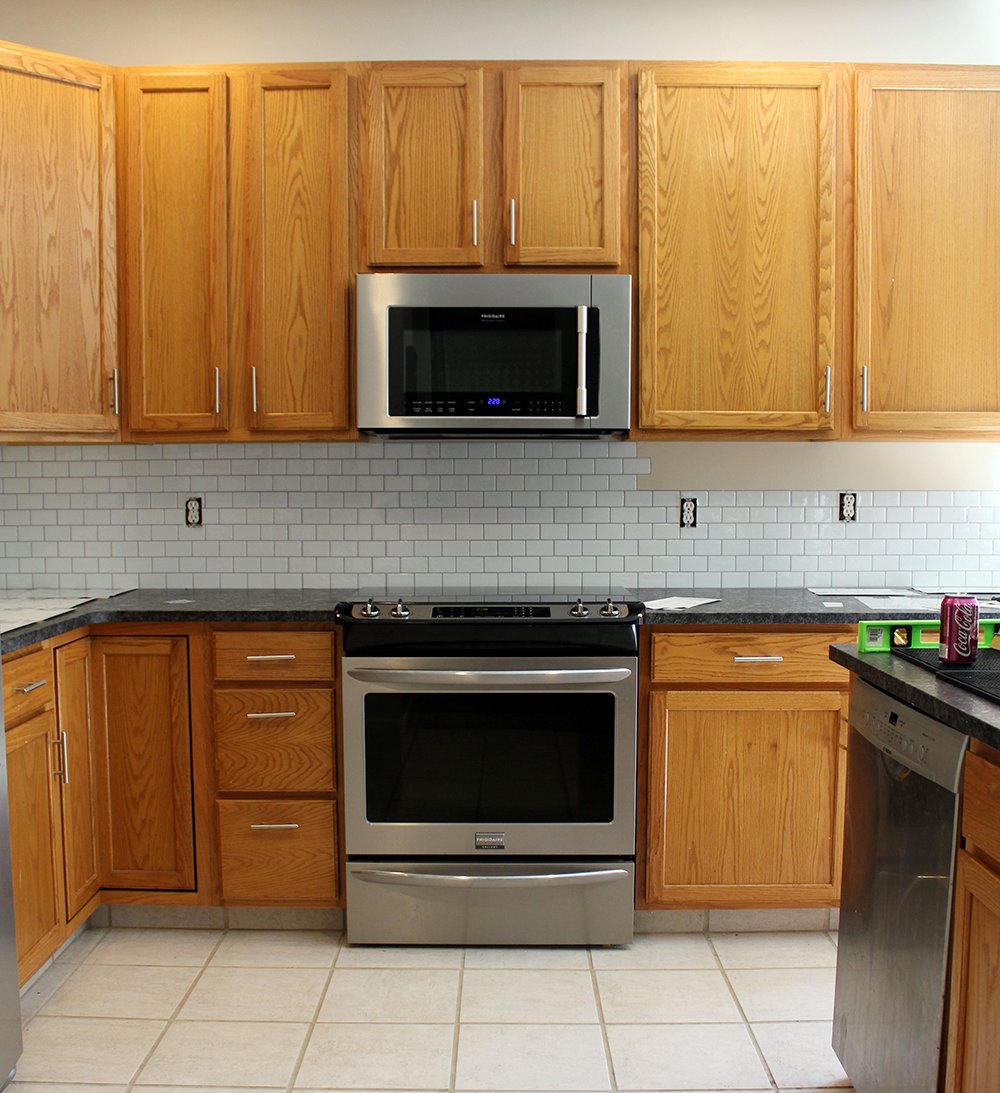
Tip 6:
We selected a thin plastic lattice molding to edge our new backsplash. My husband cut the molding to size (you can use a saw or Dremel) and hammer nails to the wall (countersink so they go in past the molding).
I filled the holes with spackling paste and sanded them after they dried. Then I painted the molding with leftover white paint from our walls.
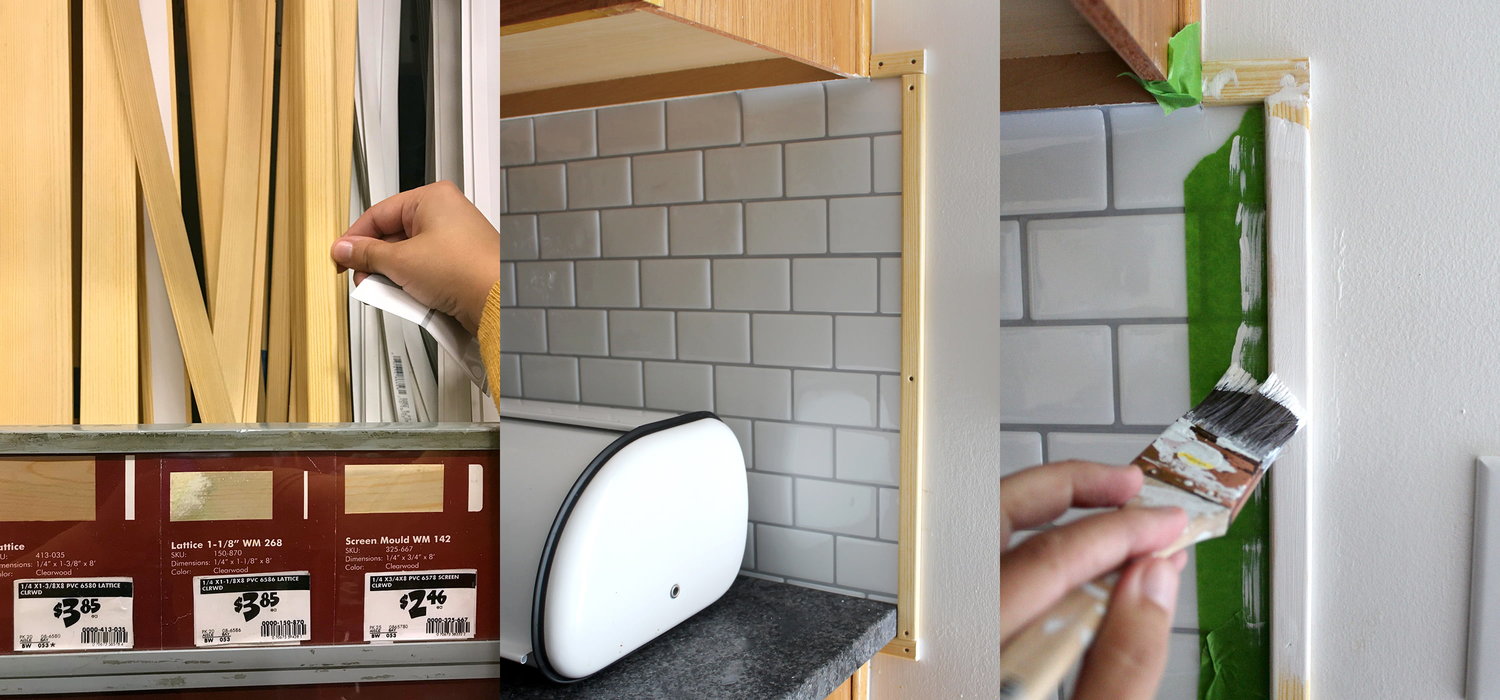
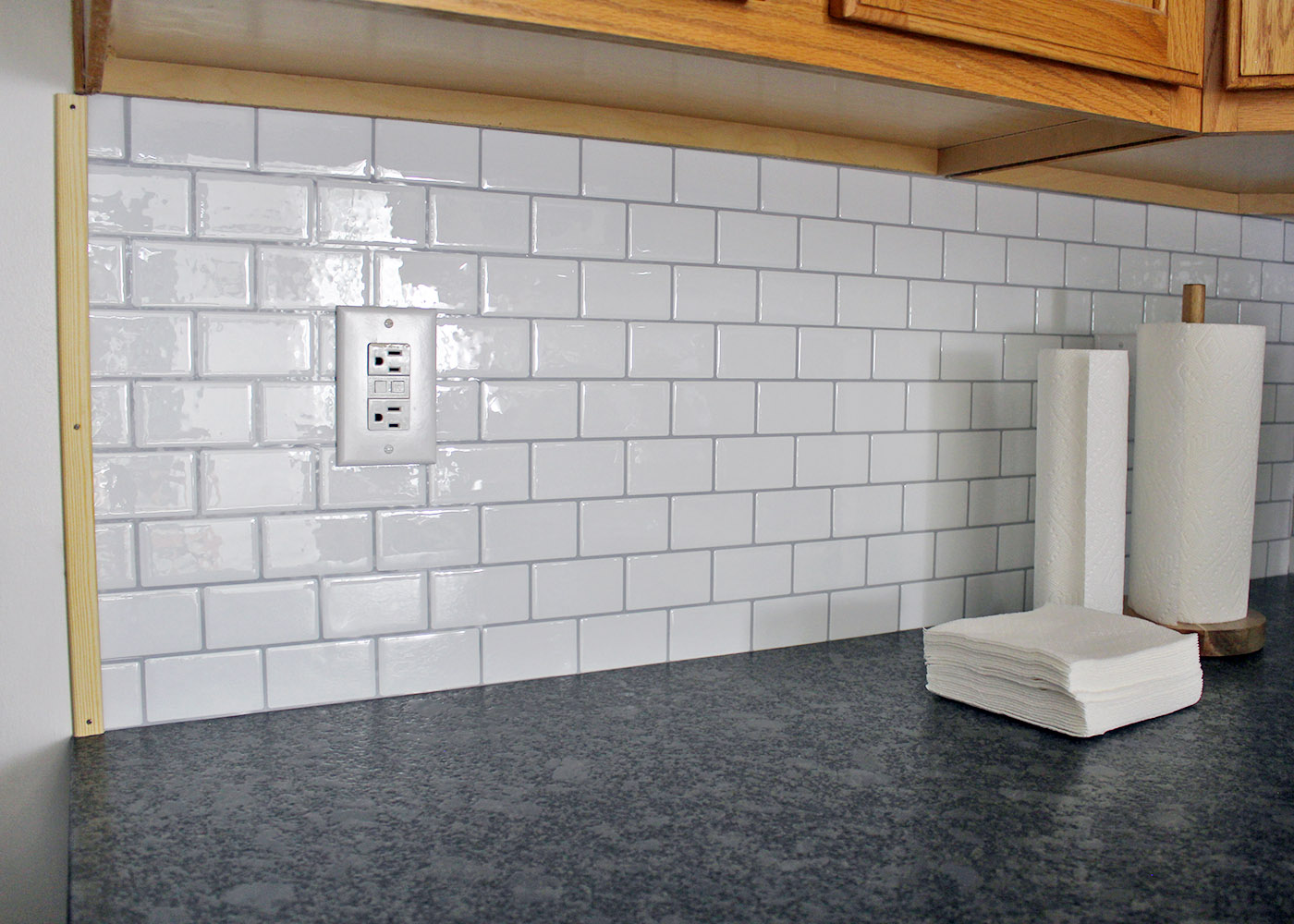
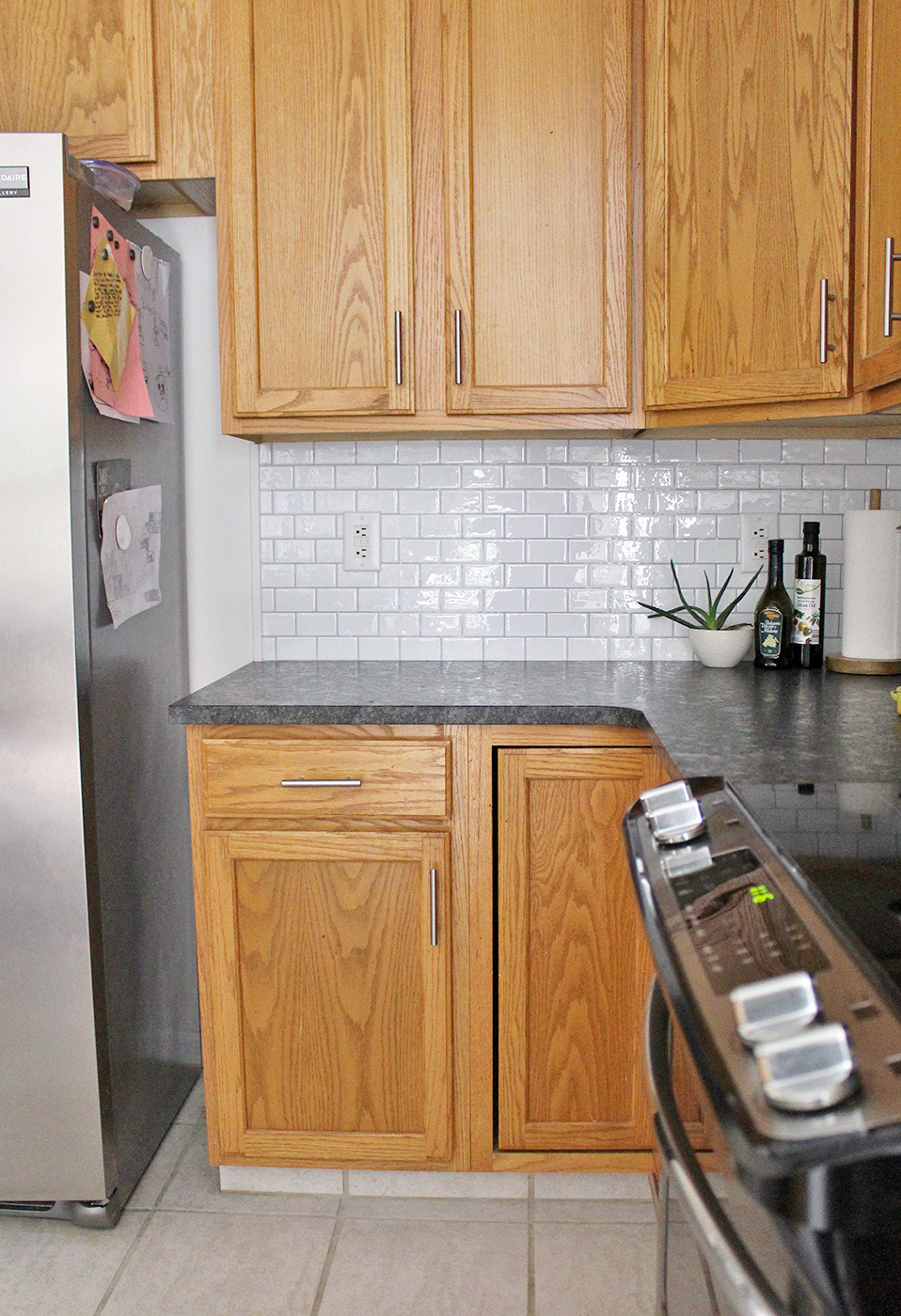
Frequently Asked Questions about Peel and Stick Subway Tile
Is a peel and stick subway tile backsplash heat-resistant?
According to the manufacturer, the material is heat resistant. Ours is installed behind our induction oven and over the past 9 months we haven’t had a material change. I would contact the manufacturer and ask before installing around a fireplace.
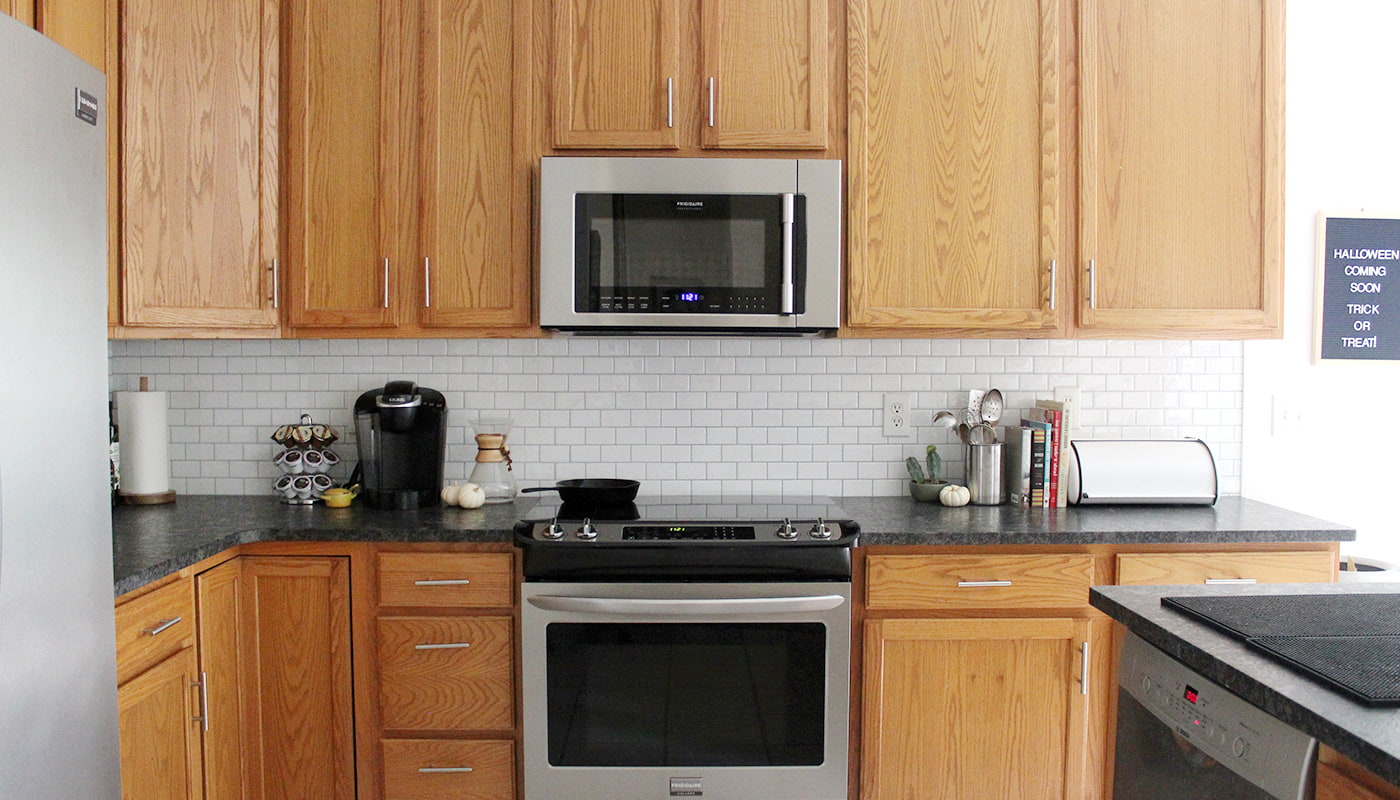
Is a peel and stick backsplash tile waterproof?
Our peel & stick tiles are anti-mold and humidity resistant according to the manufacturer. We have wiped the stick on the backsplash with a damp cloth several times without a problem. I would be comfortable installing them in a bathroom behind the sink, but would not install them near or in a shower.
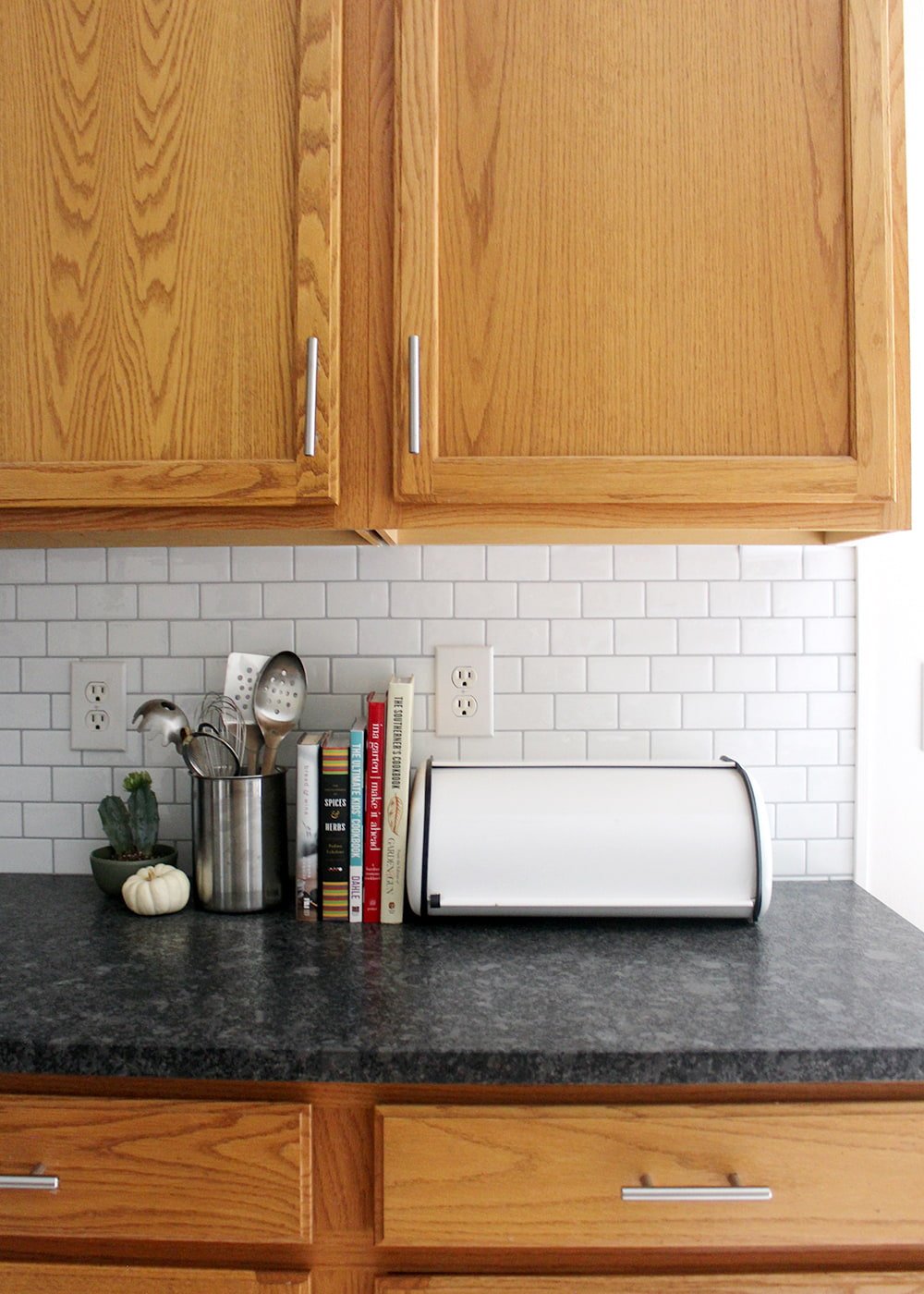
Do peel and stick tiles look real?
From several feet away it looks real because the tile sheets have a raised look with high gloss. When I stand 2 feet away from the backsplash and stare I can see lines from the tile paper.
We went with the white subway backsplash with a grey grout look. It feels very neutral and timeless but still adds character and texture to the kitchen.
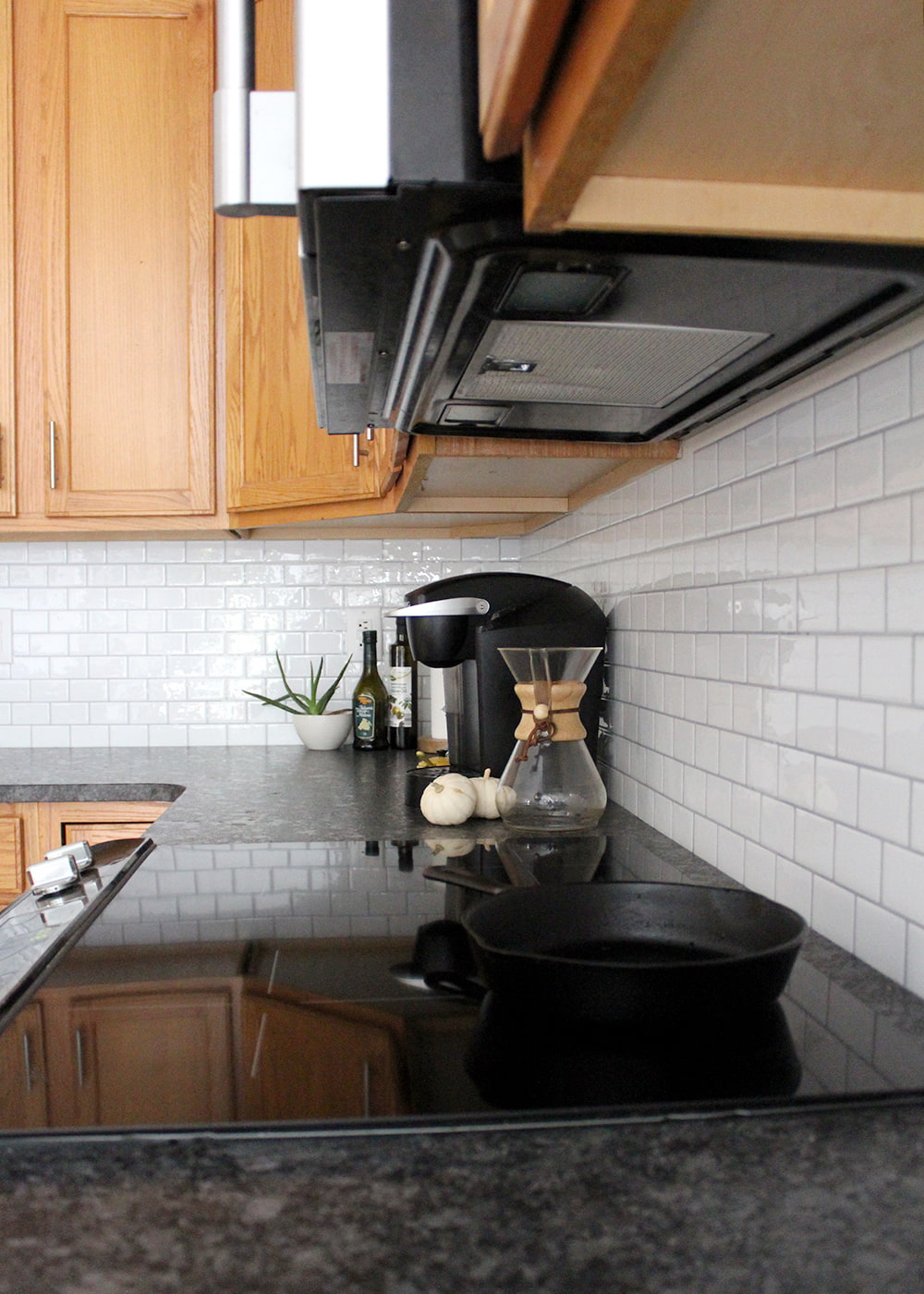

Update: Condition of Peel & Stick Tiles after 4 Years
After 4 years the tiles still look good overall with no peeling. They are still smooth and easy to wipe. I clean our faux backsplash with a damp cloth with no issue. I have not had a problem with the heat of our induction oven.
However, the tiles have turned more creamy (yellow in some light). I still think these are an excellent temporary solution for backsplashes in RVs, rentals, bathrooms behind sinks, and kitchens. Just know that the white tile color may turn more creamy after a year or two.
According to the manufacturer, the material can be removed by using concentrated heat from a hair dryer.

I hope you have found this article on our faux subway tile backsplash helpful! Our kitchen backsplash was small-budget friendly at under $125 to install, and it has the look and feel of a real backsplash.
In total the DIY project took us 3-4 hours to complete over the weekend and could be a great fit for kitchens and bathrooms on a budget.
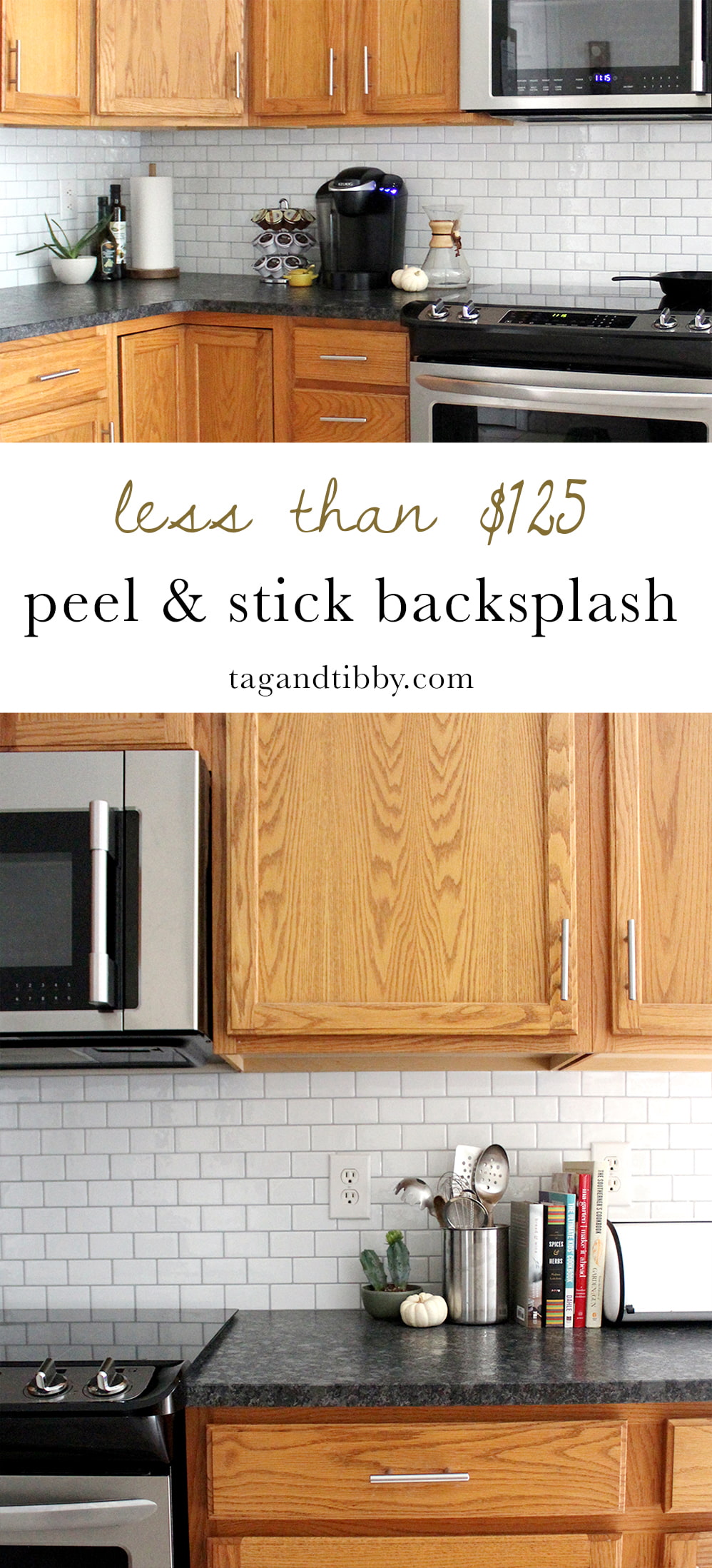

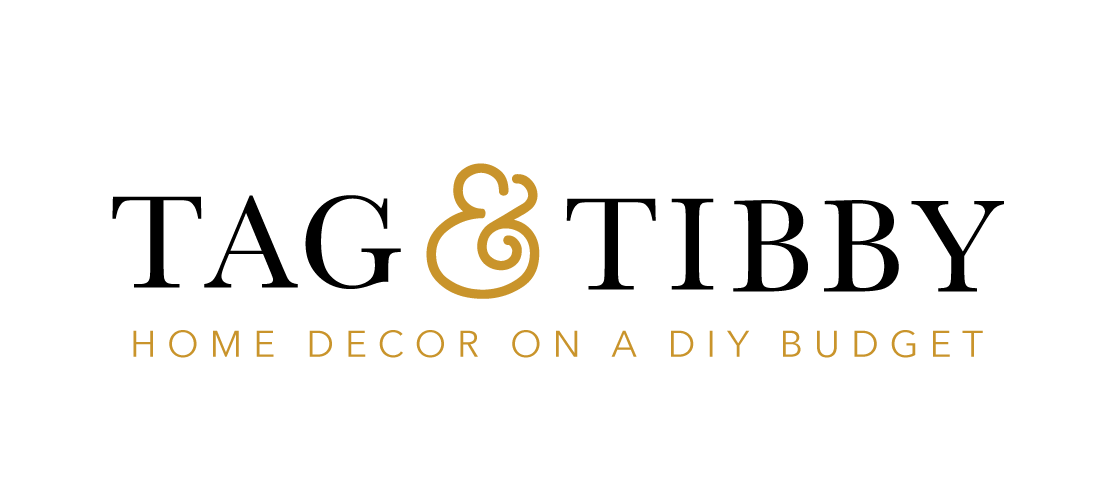
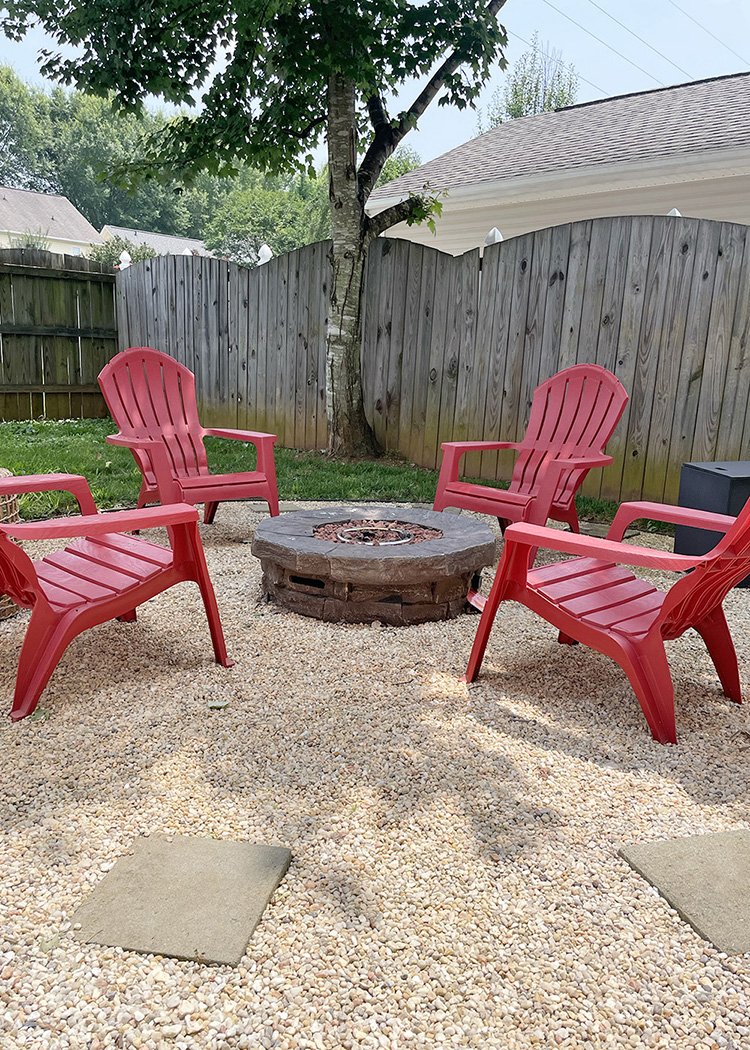
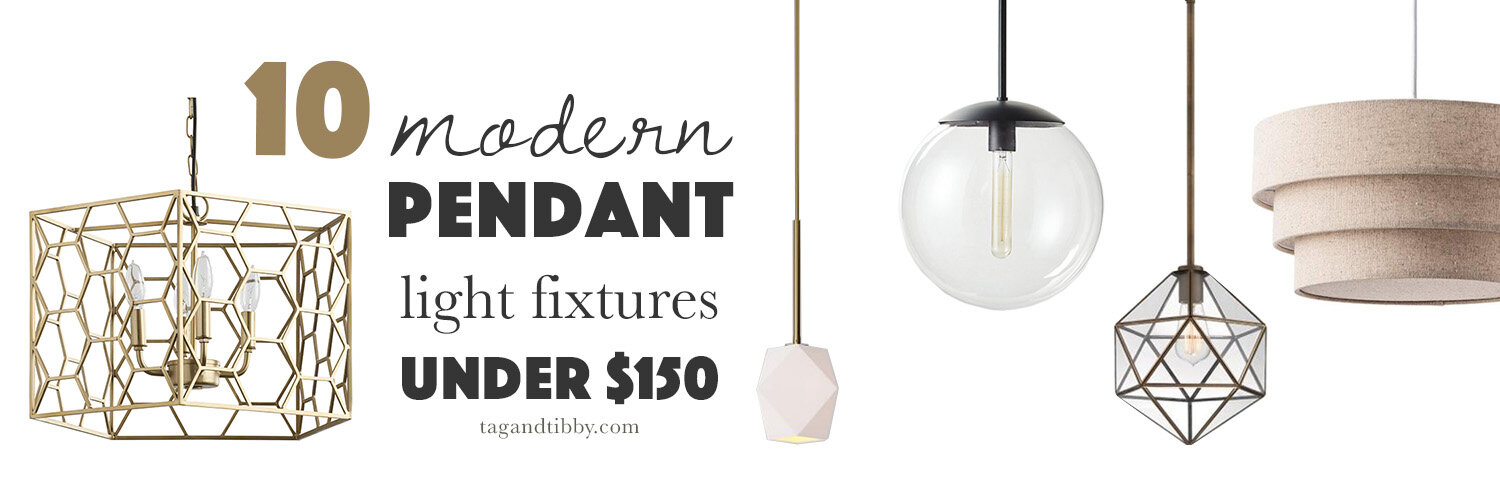
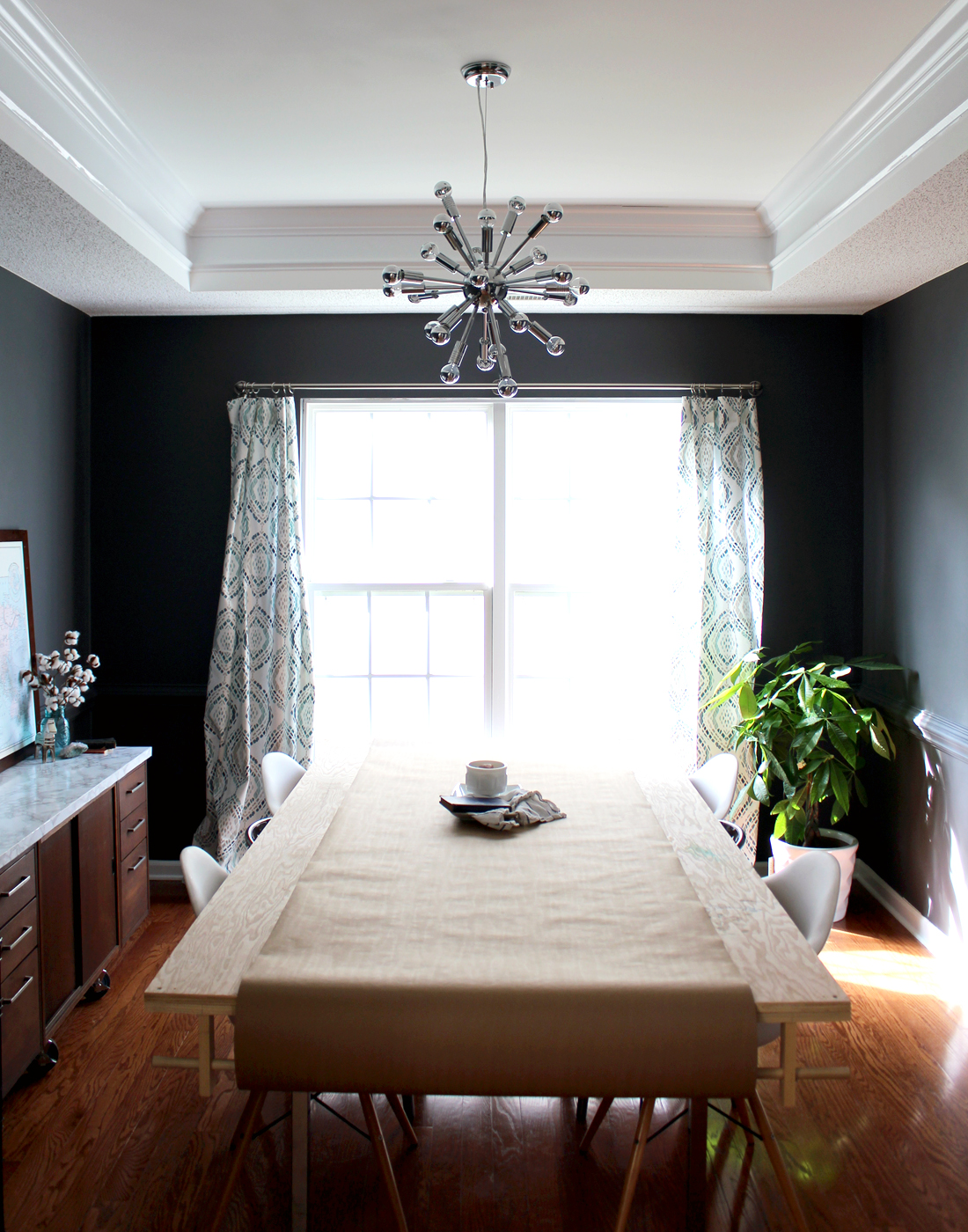
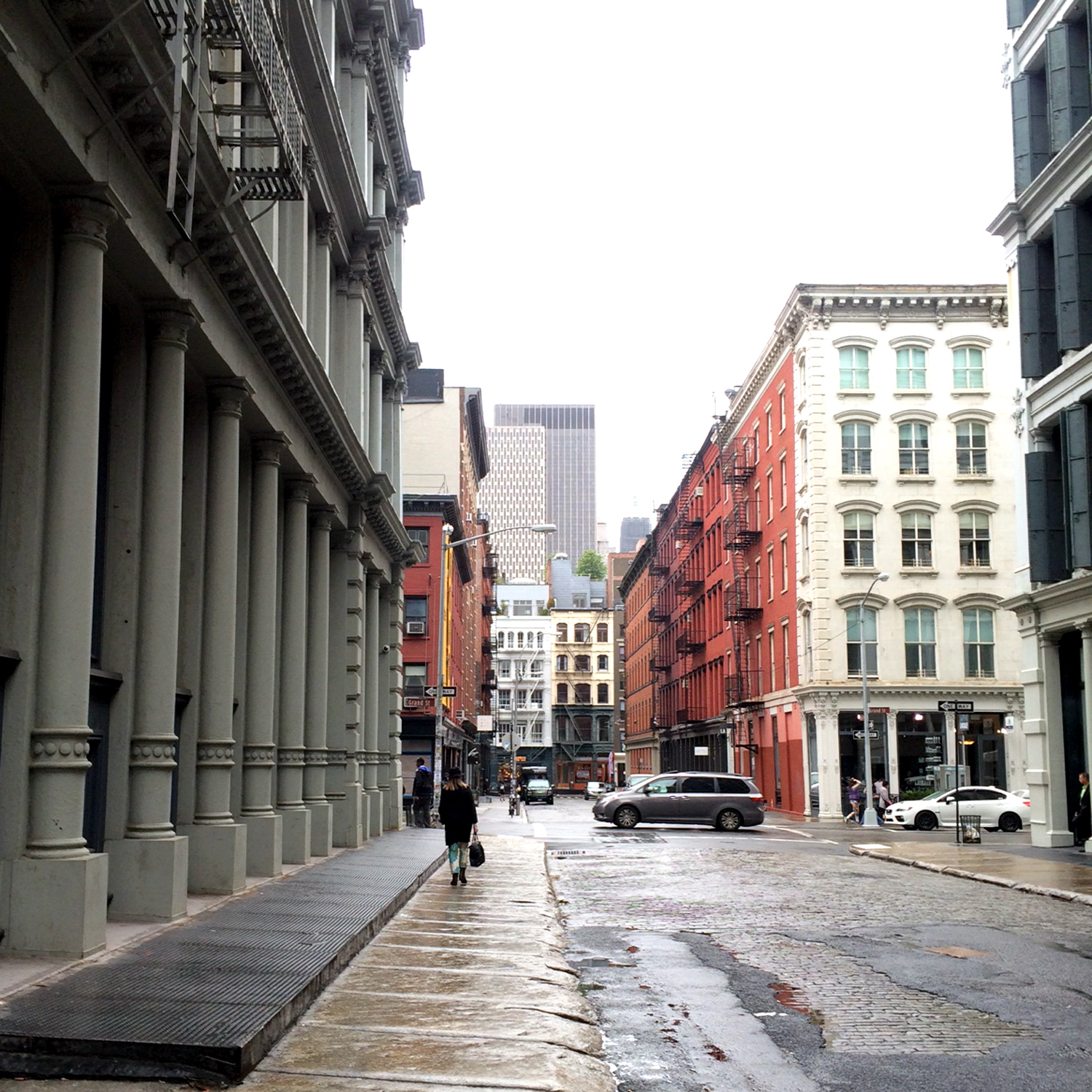
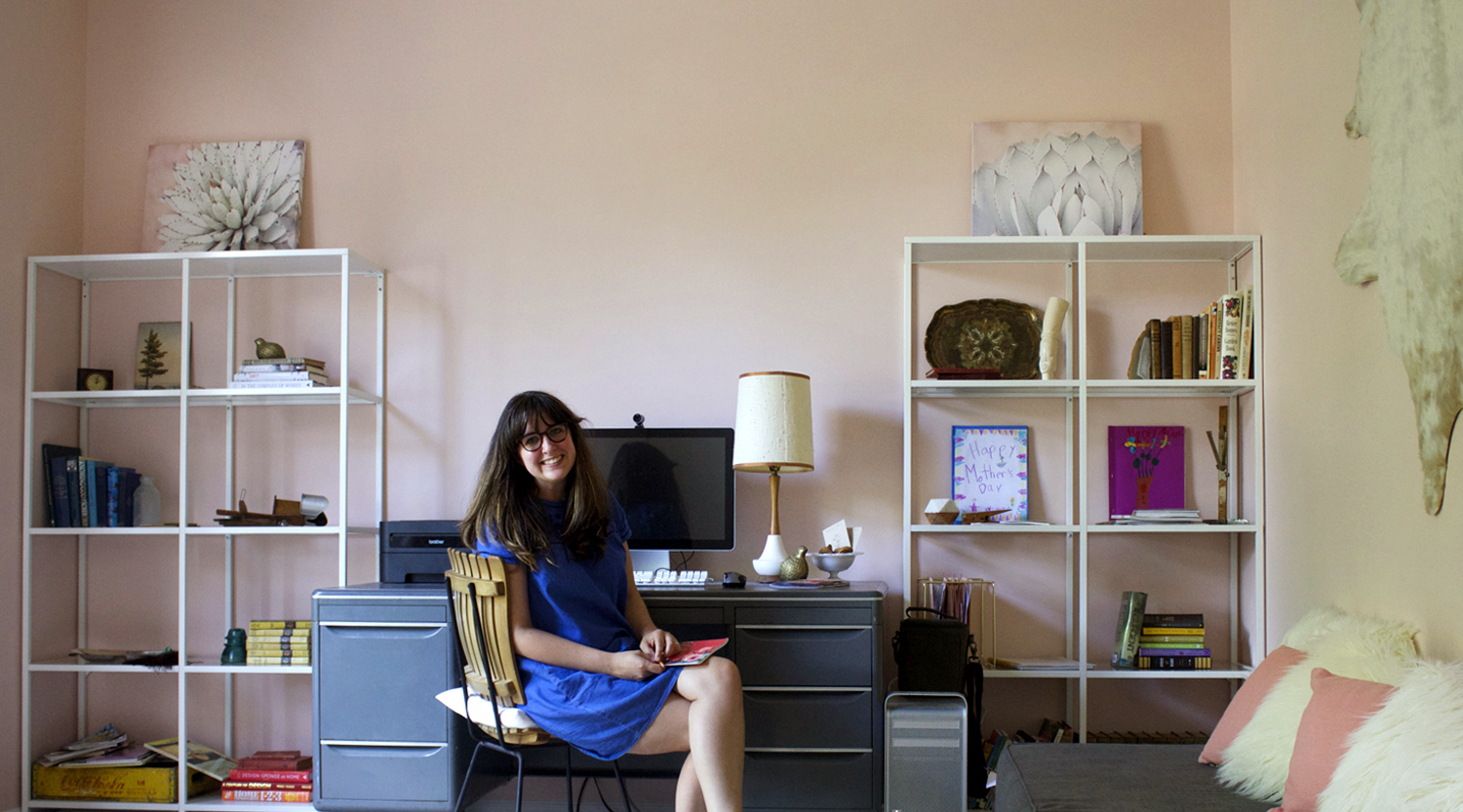

Nice work!!
Thanks Brittany!
Great article filled with lots of useful information.
I am so glad it was useful! Let me know if I can answer any other questions about it!
Brilliant! Easy to install and it looks chic!
I noticed that initially you had a formica counter-top and had a formica backsplash. We have this, too. It looks like you removed that before you added the vinyl backsplash you installed. Was that difficult and how did you do it? When you’re finished installing your new backsplash, didn’t you have to run a line of caulk along the bottom to keep liquids from going behind the counter and maybe underneath your new backsplash?
For removing our old backsplash we used a crowbar. If there is caulking around it, you might need to cut into it first with a utility knife. Caulking the new backsplash is a good idea! We haven’t done that yet 🙂 But thankfully we aren’t near the sink so not much liquid goes back there.
How are these holding up? I’m thinking of getting these exact ones but saw some troubling reviews on Amazon!
We’ve had it up for over 6 months with zero problems. I saw some grease/dirt over our stove a few days ago and wiped it away with a damp cloth. Nothing is peeling or changed since we installed. Hope that helps!
That looks so nice! I’ve been seriously considering doing this but have been stumped on how to finish at a wall similar to yours. I’ve love to see how you finished the wall where the refrigerator/doorway is. Would you share that too? Thank you!
I just added two more pictures showing the refrigerator side (under tip #5) I hope it helps!!
How did you cut the spot in the backsplash where the outlet would go?
We laid a tile sheet over the outlet, made some small pencil marks on the tile sheet to outline the outlet. Then we laid the tile sheet flat and cut a rectangle out with a utility knife. The material is flexible and easy to cut. There are a few pictures above of the process. Hope it helps!
Will this stick on to a granite back splash?
I reviewed the material’s FAQ page and they can be added over existing tiles if the surface is clean and smooth. They do not work well over uneven surfaces. Hope this helps!
My backsplash is Formica that has a slite bumpy texture, will peel and stick adhere well to this?
It would be best to ask the manufacturer, but my best guess is that it will adhere but the bumpy texture may show through a bit. Could you sand the bumpy texture down a bit?
Where do you purchase this for that cost?
I just updated the article with current links to the product. We ordered ours from Amazon! https://amzn.to/3hpUAdp (affiliate link)
What brand tiles where these? Looks great. Any chance of seeing a close up of where the sheets meet each other? Thanks
Hi! These are Tic Tac Tiles ordered from Amazon. Some of the photos toward the end of the article show closer images of the tiles. For me there really isn’t a noticeable connection point until about 12 inches away (leaning in past the countertop depth). These are the tiles: https://amzn.to/3ebyhu5 (affiliate link)
I bought the peel n’ stick tiles a few weeks ago and they hv been sitting in my house while we finish installing the cabinets. I will be putting up the tile tomorrow but would like to add some shelves. Could I drill directly into the peel & stick tile?
Could you install the shelving then add the peel & stick tile? I don’t have experience drilling into the tile, I’m not sure if the adhesive would hold.
Beautiful! What did you use for your kitchen counters?
Thank you! Our countertops are a steel grey leathered granite. More on them here https://www.tagandtibby.com/blog/2018/4/15/why-we-picked-leathered-granite-countertops
Will these work for in shower?
They would work for some water (behind a sink) but I wouldn’t install in a shower.
are the tiles white with black grout?…..
They are a peel & stick tile, the grout color is gray